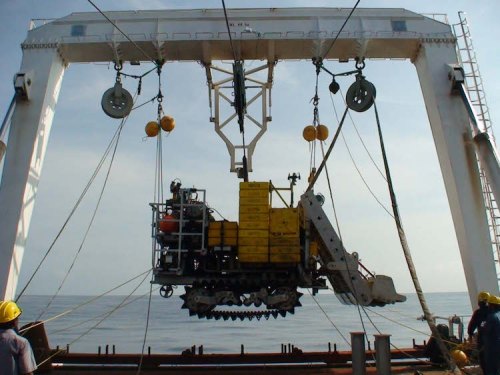
Bougainville Revolutionary Army fighters look down on the Panguna mine in 1996. Now Rio Tinto hopes to wash away its role in war crimes
Rio Tinto ‘gives up’ Bougainville Copper stake
Daniel Palmer | The Australian | 30 June 2016
Rio Tinto has exited its 53.8 per cent stake in the ASX-listed Bougainville Copper after a near two-year review of its position.
The mining giant will transfer the holding to an independent trustee who will distribute the shares to both the Autonomous Bougainville Government (ABG) and the Papua New Guinea government.
It will receive no compensation in return despite the stake being worth over $40 million as of the close of trade yesterday.
The decision by Rio will see the ABG receive a greater proportion of its stock, although both ABG and the PNG government will hold an equal share of 36.4 per cent once the stake is transferred.
Bougainville Copper’s prospects rest on the future of the controversial Panguna copper/gold mine in Papua New Guinea, which has been out of operation since it was central to the start of a 10-year civil war that broke out in 1989.
The Panguna mine was a major producer in its heyday and is believed to still house a very significant 5.3 million tonnes of copper and 19.3 million ounces of gold. However, it could cost up to $10 billion to restart production, while the hurdle of public support will be a challenge to clear.
Bougainville Copper’s rights to the mine were stripped in 2014, which led to the Rio review and while it still hopes to reclaim the licence to develop the mine, there has been no significant change to the state of play.
It does, however, retain an exploration licence.
Rio’s stake was worth $92.5m when it first hinted at an exit, with market interest steadily fading since.
“Our review looked at a broad range of options and by distributing our shares in this way we aim to provide landowners, those closest to the mine, and all the people of Bougainville a greater say in the future of Panguna,” Rio Tinto Copper & Coal chief executive Chris Salisbury said.
“The ultimate distribution of our shares also provides a platform for the ABG and PNG government to work together on future options for the resource.”
The deal will see Rio give six months’ notice for termination of its management agreement with the ASX-listed group, while Bougainville Copper chairman Peter Taylor will step aside, with immediate effect.
Should either the PNG government or ABG not accept the stake offered by Rio within two months, it will be offered up for the other party to take control.
The departure of Rio from the project echoes a similar decision to walk away from the Northern Dynasty Minerals project in Alaska in April 2014, as it gifted its stake in that controversial project to charitable enterprises.











